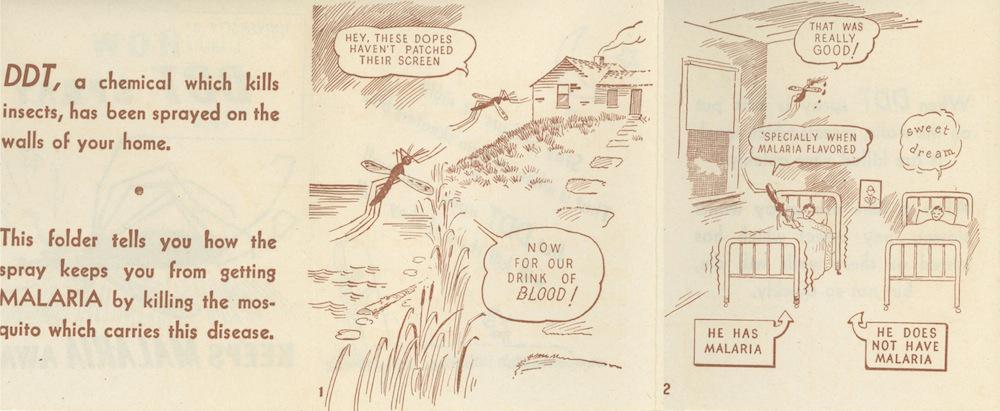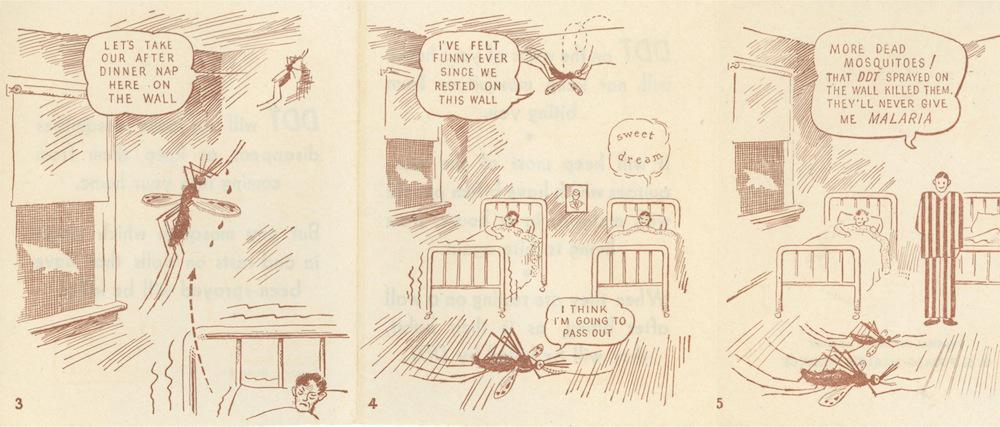The Vault is Slate’s history blog. Like us on Facebook, follow us on Twitter @slatevault, and find us on Tumblr. Find out more about what this space is all about here.
The U.S. Public Health Service distributed this folding informational comic to people whose homes had recently been sprayed with DDT (dichloro-diphenyl-trichloroethane), to explain the way that the chemical would kill malaria-carrying mosquitoes. The comic is preserved in the great digital collection of government comics maintained by the library of the University of Nebraska–Lincoln.
DDT was first synthesized in the 19th century, but its insecticidal properties weren’t discovered until 1939. In the United States at the end of the Depression, historian Edmund Russell writes, “a stagnant economy had joined with stagnant pools of water to send the malaria rate climbing.” With the advent of World War II, the government had a new incentive to curb malaria rates: The disease severely weakened the strength of the military, as malaria spread from afflicted civilians to soldiers training on military bases in the South.
While the Government Comics Collection dates the folder to 1940, I think it may have been published in the late 1940s, during the U.S. Public Health Service’s National Malaria Eradication program. As part of this effort, the Centers for Disease Control reports, government workers sprayed the walls of more than 4.65 million homes with the insecticide, selecting districts to treat based on previous records of malaria outbreaks. It worked: by 1949, the CDC writes, “the country was declared free of malaria as a significant public health problem.”
Concern over the other problems that DDT might cause began to surface within the Department of Agriculture in the late 1950s. The publication of Rachel Carson’s Silent Spring in 1962 called attention to DDT’s deleterious influence on reproductive development in wildlife, and raised fears (since substantiated [PDF]) that the ubiquitous chemical might have similar effects on humans. Carson’s book spurred a decade of public anti-DDT activism that culminated in the Environmental Protection Agency’s cancellation order for the chemical in 1972.

Government Comics Collection.

Government Comics Collection.

Government Comics Collection.